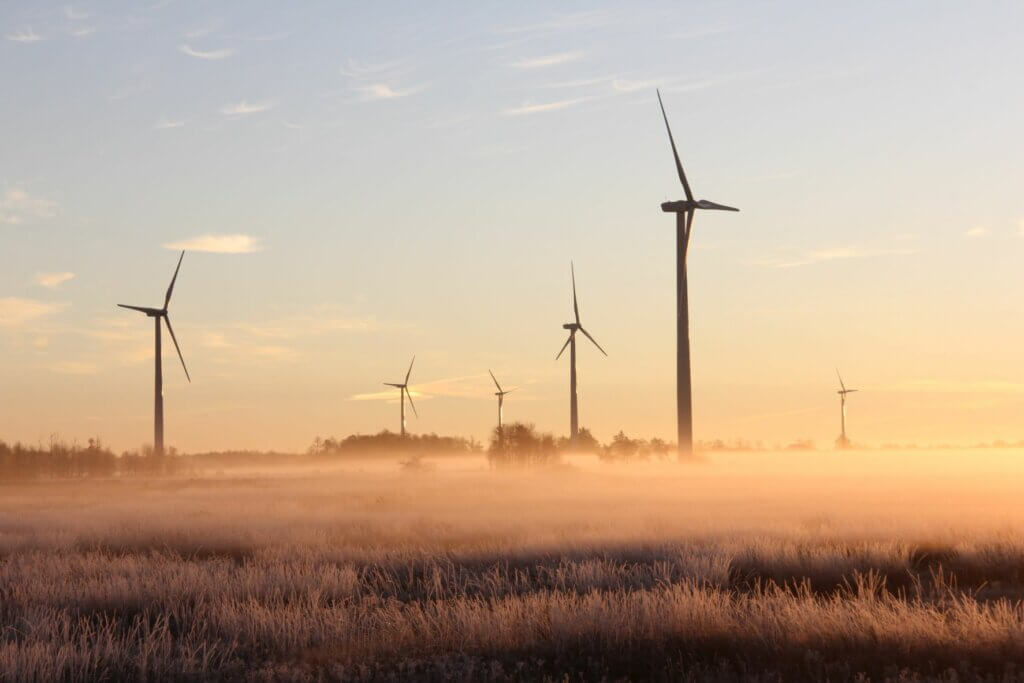
You’ve probably heard of carbon offsetting – but what is carbon insetting?
In this post, we explore the concepts of carbon insetting, looking at how it differs from carbon offsetting, and how your business can implement carbon insetting programmes that deliver real benefits throughout the supply chain.
The pressure on organisations to become Net Zero and lower their emissions is growing – and one of the most popular methods of achieving this is carbon offsetting. This is a reduction or removal of emissions of carbon dioxide and other greenhouse gases made to compensate for emissions made elsewhere.
In practice, this might look like a business planting trees and engaging with reforestation initiatives or establishing a continuous programme that compensates for future emissions using carbon credits.
This is a tradable permit or certificate that provides holder of credit the right to emit a certain amount of Co2 or other greenhouse gas. For example, for every new building built or flight made, the company responsible would purchase more credits to cancel out their emissions and impact.
Whilst the concept of carbon offsetting has firmly established itself in the business world – carbon insetting is relatively new.
So what is carbon insetting?
This is a strategy designed to decrease emissions by investing in and promoting sustainability not only in a business’s own operations – but across their entire supply chain.
After identifying unsustainable practices within the supply chain, a business can encourage the organisations responsible to improve their operations to be more environmentally friendly with financial initiatives or other methods of help. It is essentially financing decarbonisation measures within the sector or business where the emissions first originated.
This could mean giving a supplier the means to invest in new machinery that’s more environmentally friendly, meeting with them to facilitate greener decision making and sometimes, if no solution can be reached, ending a business relationship and replacing it with a more sustainable one.
When done correctly, carbon insetting is an innovative practice that can reduce carbon emissions, drive the value of all businesses involved and improve supplier relationships – all whilst boosting their reputations and green credentials!
Carbon insetting highlights the significance of Net Zero, and the expectation that businesses should take responsibility regarding their operations effect on the environment.
It’s essentially one of many business sustainability measures that can be implemented as part of a broader climate management approach. Businesses need to take responsibility by engaging with strategies that aim to reduce and undo the damage their operations have on the planet.
It’s also an effective way of tackling Scope 3 (supply chain) emissions – which can make up 80% or more of a business’ carbon footprint. For businesses that are serious about achieving true Net Zero (and not just Net Zero in their own operations), carbon insetting can be an integral part of the solution.
From a reputational point of view, carbon insetting is an effective method for organisations who want to change how they’re perceived and take steps to make their image into one that is more environmentally aware.
Making the switch to sustainability has mutual benefits for both your own business and organisations across the entire supply chain – helping to cut costs, inspire new innovative ideas and ultimately increase the operation’s overall efficiency.
Supporting suppliers with their sustainability programmes can also deliver benefits to your relationship – strengthening trust and building long term partnerships. This can deliver long term financial benefits when it comes to negotiating commercial contracts.
Before you can take the practical steps to lower your carbon emissions across your entire supply chain, you must know which areas of your supply chain have room for improvement and identify the suppliers who may be suitable carbon insetting.
This is where we can help, using our specialist Supply Chain Emissions Calculator. This enables you to easily measure Scope 3 emissions, estimate the carbon footprint of your suppliers whilst streamlining the reporting process.
This gives you an overview of the key areas and industries impacting your emissions through tangible data and reports – establishing a valuable foundation for further analysis and supplier engagement which can inform your decision and make your carbon reduction strategy far more effective.
Where required, we can also help you to identify and implement the right carbon insetting strategies and put you in touch with a trusted team of business sustainability experts to support you at every step of the way.
Discover more about how AXIOM sustainability software can lower your carbon emissions and book your free demo here.


Want to know more? Please get in contact with our team here.
Contact Us